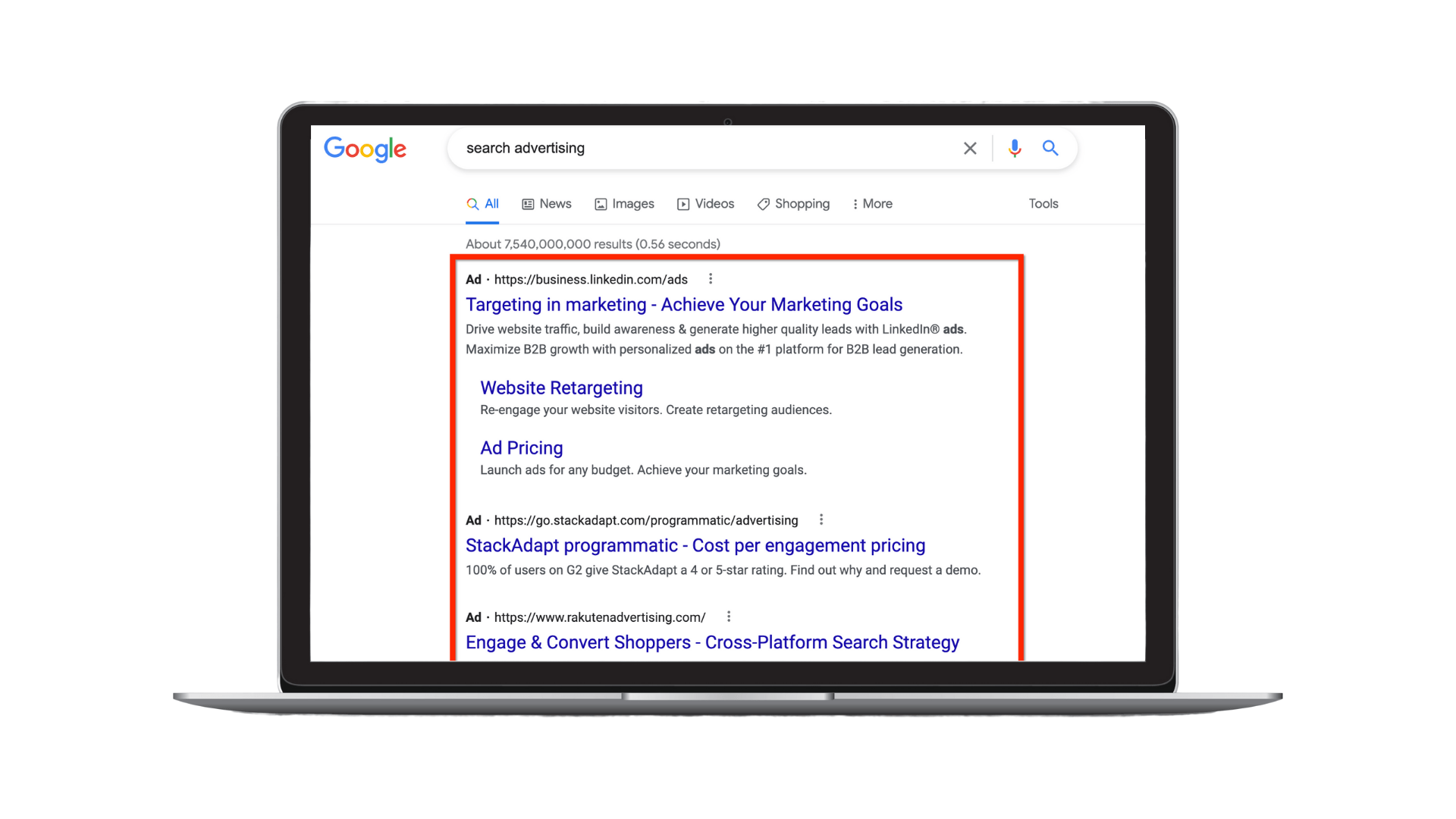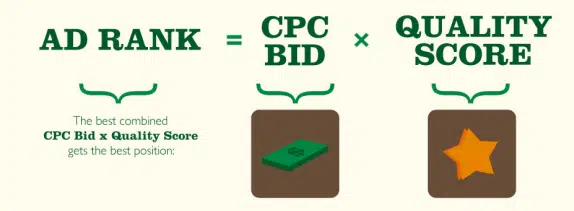What is Search Advertising?
Search advertising, often called paid search advertising or search engine marketing, is a marketing technique that involves placing digital advertisements inside search engine results. Companies that run search advertising campaigns pay a small fee each time someone clicks on one of their ads. Having the ability to bid on keywords, so ads appear when people are looking for a specific product or service, is a powerful tool for today’s business advertisers.
In this article, we discuss how search advertising works and dive into the technical industry terms you’re most likely to hear from ‘in the know’ marketers.
The Importance of Search Advertising
Broadly speaking, search advertising is a method of using ads that show up when an internet user searches for specific keywords or phrases while looking for a product or service.
The beauty of search advertising is that your brand is creating advertisements based on keywords that potential consumers are searching for. So, your ads represent whatever a customer intended to research, particularly when ads are optimized for local intent. Search advertising is a frequent way that multi-location brands choose to advertise because they know they can achieve greater reach with a keyword-based strategy.
Your multi-location business can apply search advertising across various channels. Because it is based on keyword combinations, the success of the advertisement depends on your allocated budget to keyword targeting.
Search ads are often run on search engines like Google, Safari, or Bing. Google owns an impressive 92 percent of the search engine market share so we’ll be focusing on Google Ads, formerly known as AdWords. On Google’s search engine results page (SERP), the first three results are often advertisements and are marked and bolded as ‘Ad’. Below is an example of Google Ads for the keyword, “search advertising.”
Before you begin selecting keywords to trigger your search ads, you must understand how to measure the success of those keywords in your search advertising efforts. Here are some tactics and metrics related to search advertising that all successful multi-location marketers must master before implementing a search-advertising campaign.
Tips for Measuring the Success of Your Advertising Campaigns
Negative Keywords
A negative keyword is a word or phrase that allows your brand to filter out who your ads will be displayed to on SERPs. Negative keywords are an essential part of any search advertising campaign. After you have decided that a term is irrelevant to your campaign, you can add that term as a negative keyword, and it will then prevent your advertisements from displaying when those specific keywords are searched. When you implement negative keywords in your search advertising campaigns, irrelevant impressions will drop, and your click-through rate (CTR) will increase.
Long-Tail Keywords
Long-tail keywords are specific keyword phrases that consumers are more likely to search for as they get further down the buyer’s journey and purchase funnel. These niche keywords usually consist of two to five words specific to your business.
With shorter general keywords, competition to get the highest bid is fierce, and you may not be attracting the correct audience. Since long-tail keywords are more targeted, they will draw less traffic to your website but will more closely align with your product and service offerings.
CPC (Cost-Per-Click)
In the CPC payment model, advertisers pay each time a user clicks on their advertisement. Success with CPC advertising depends on two things: Your “bid” (the amount you are willing to pay if someone clicks your ad) and your actual ad price (what you’re paying as a result of the ad auction).
In Google Ads, CPC is calculated by taking the competitor below your position’s ad rank, divided by your quality score, which is a diagnostic tool used by Google to determine how relevant your ad is to users’ search. Understanding how CPC is calculated is crucial because it helps determine the value of the engagements your ad makes, and it shows whether the ad was targeted enough to engage those users who chose to click. CPC aims to get the lowest, most efficient price possible.
Image Courtesy Search Engine Land
PPC (Pay-Per-Click)
PPC is a metric that measures the cost paid to a host website when a searcher, a) likes or needs a brand’s product or service, and b) clicks the local ad. One important aspect of PPC in search advertising is the need for brands to protect their branded terms. A study found that if a brand is not targeting its branded keywords, it can lose between 10,000 and 60,000 visitors per month to competitors bidding on their branded terms.
CTR (Click-Through-Rate)
In search advertising, CTR is defined as the ratio of clicks to impressions. In most cases, the higher the CTR, the more effective your search advertisement. Use this example provided by Google to help calculate your CTR.
Contextualization
Contextualization advertising is displaying ads based on a website’s content or keywords. For example, if you’re a restaurant brand and someone is reading a local restaurant and dining blog, your contextual advertisement might show up on that blog. By using the most targeted keywords appropriate for your search advertising campaign, your multi-location brand has the opportunity to dominate the competition and drive value to consumers. The effectiveness of contextualization is dependent on the quality and quantity of data that you utilize. Online reviews, user engagement histories, and other localized marketing strategies can help you accurately target keywords to become locally relevant.
Get Started Developing A Winning Search Strategy
Nearly one-third of consumers use the internet to search for local businesses daily, and 60 percent of consumers do so at least once a week. We understand how critical it is for multi-location brands to develop relevant and targeted location-driven advertising strategies. To succeed with localized search advertising, your multi-location business must hit the right consumers at the right time and utilize keywords to make it onto the first page of search results. If you’re also interested in running social advertising campaigns, read our article on social advertising without cookies — we discuss the future of social advertising and how to prepare.
With today’s technology, it’s possible to create localized search advertising campaigns for national brands at scale, and SOCi can help. SOCi has various local search tools such as the Listings and Local Pages that can help your multi-location business build a robust local search strategy and dominate the competition. Request a demo today to learn more about SOCi’s localized marketing and advertising solutions for multi-location businesses!


